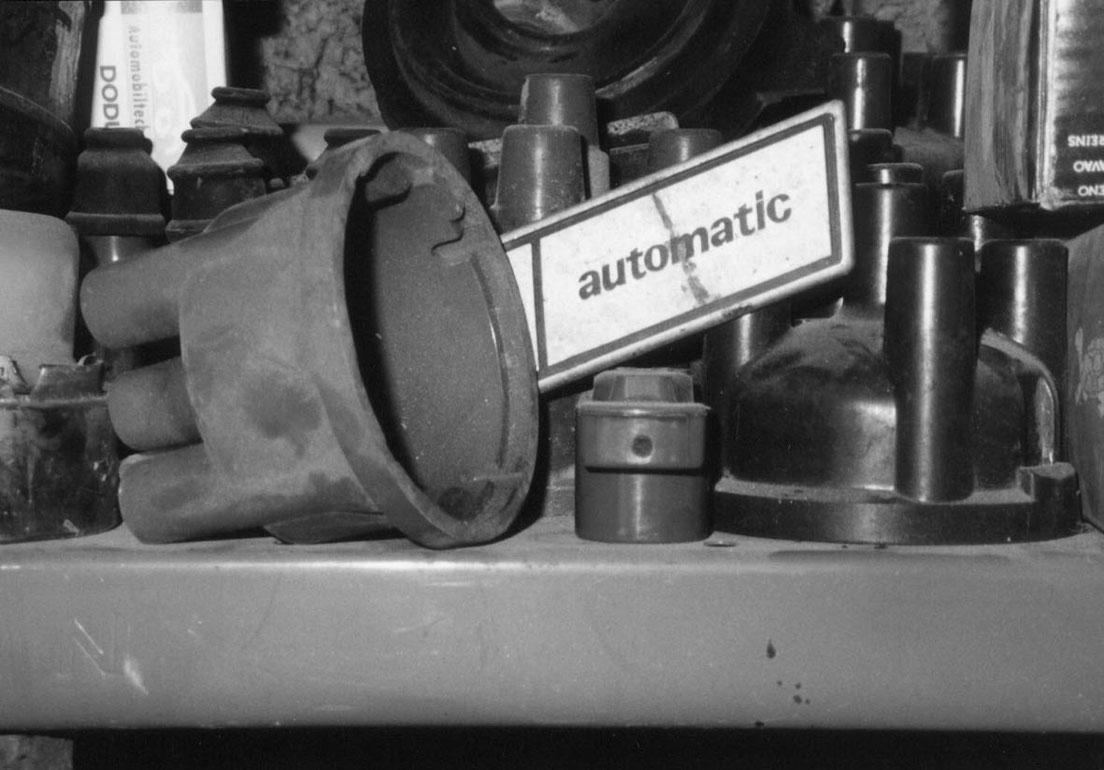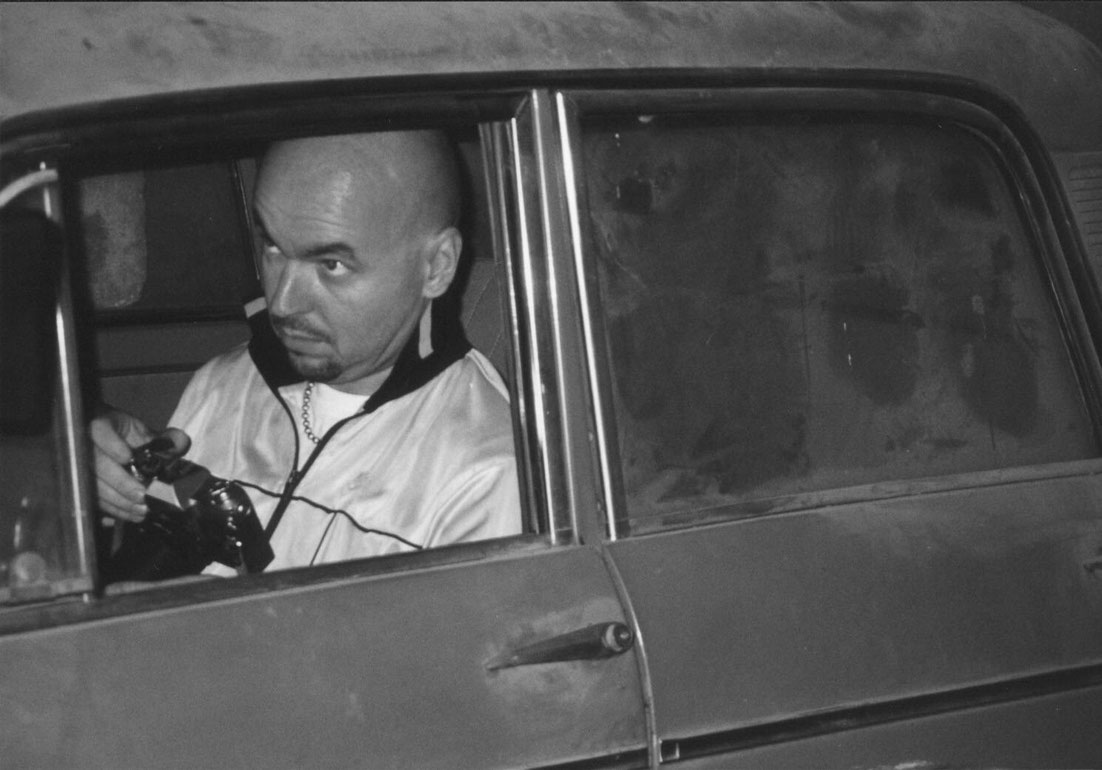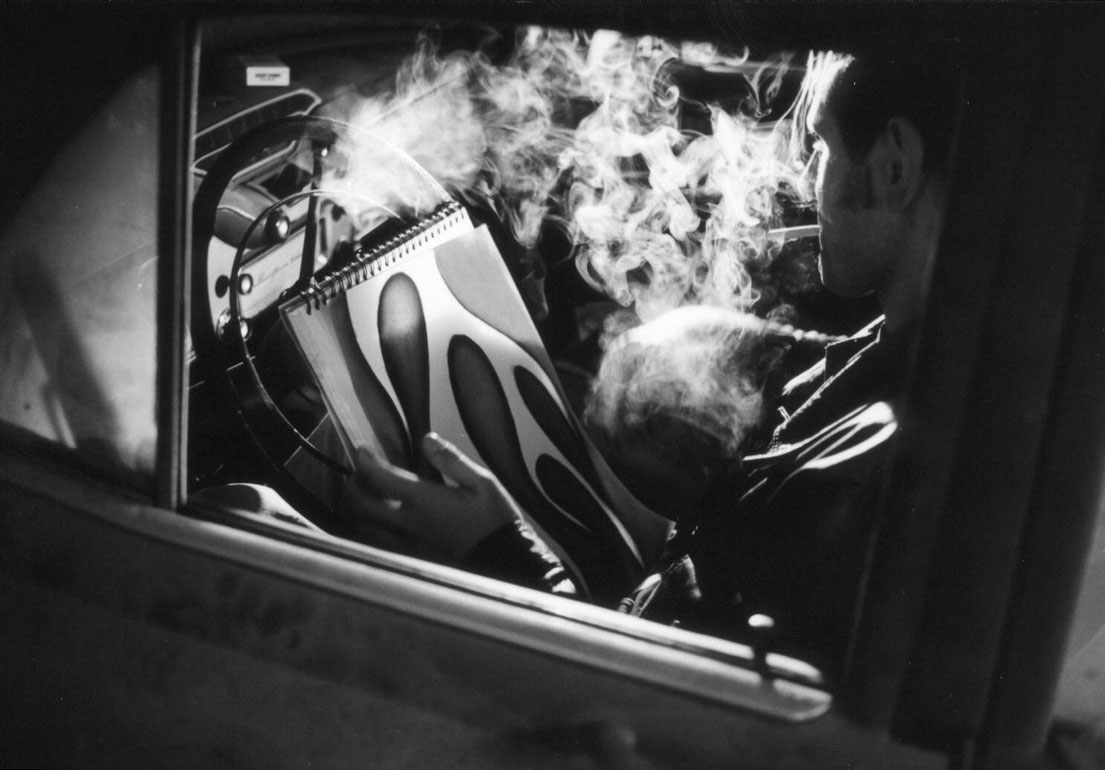automatic
The basic elements of automatic, "three men, three cars and three obsessions", call to mind a number of scenes from road movies. But none of its seven minutes actually take place in a moving car. There are no panoramas of spaces where people interact, and no ground is covered. In its dense sequence of images all the action is internal: in the editing, the cars, and in a garage. The scenes in black-and-white adhere to a rigid, minimalistic structure comprising the three car models with their "drivers" and three camera angles which interact with details of the cars´ logos and still lifes in the garage. The "drivers", encapsulated in their vehicles, serve as symbols of freedom and are absorbed in activities which reflect artistic creation, meditation and voyeurism: They draw, handle with a camera and listen to music. The cars´ windows are dirty, and dust and inertia are the outer parameters within which they operate. Not until the last shot is the viewer permitted to see the scenery as a whole, a rural garage, which once again underlines the eccentric nature of a setting in which patterns of a structural automatization (of a social mechanization and a montage of images, and also of a genre) and their encoded forms (such as liberalization, freedom, individuality and authenticity) are altered in a subversive way.
automatic takes a look at loners, motor vehicles and obsessions while wit and paradoxes are used to differentiate being driven and the fetishization of engines. The semi-electronic uptempo Latin beat, the soundtrack by Binder&Krieglstein, takes the question of the motor behind things to a different level.
(Rike Frank)
Three men, three cars and three obsessions: automatic is a rhythmical and pulsating film tribute to the garage and the engine, but most of all to the car as a fetish. The hot Latin beats fill the garage with music.
(Catalog of the Museum of Contemporary Art in Krakow)
--> AUTOMATIC
automatic
2002
Austria
7 min



